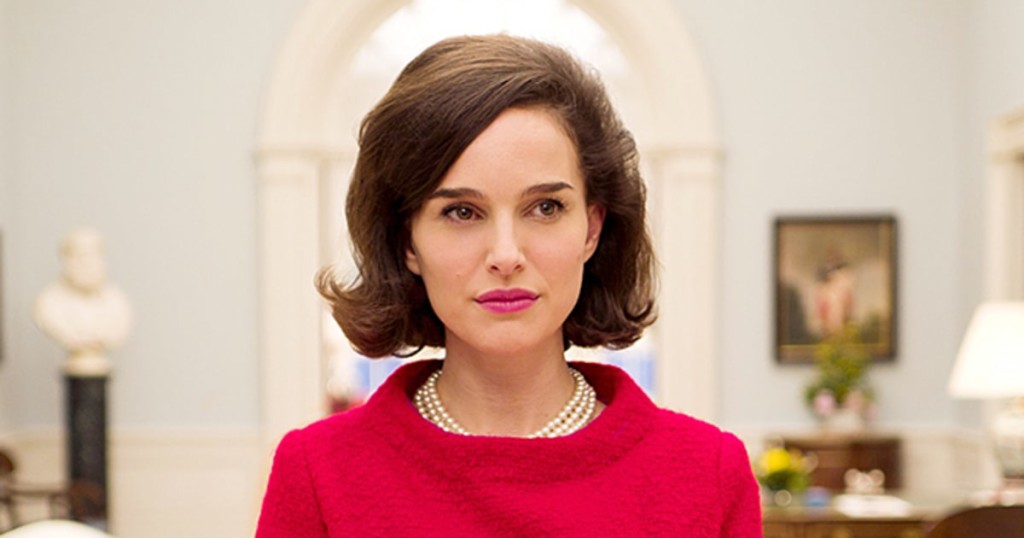
If you put a Chanel suit and pillbox hat on Natalie Portman and direct her to speak breathily, you’ve got Jackie Kennedy, which is noteworthy, but not enough reason to see the dreary Jackie. Portman superbly paints the portrait intended by director Pablo Larrain (No), but that vision is unconvincing and not at all compelling.
Larrain’s thesis is that Jackie moved from shocking grief to a fierce determination to enhance her husband’s legacy in the three days after the assassination, intentionally creating the brand of “Camelot”. He interweaves three stories: the assassination and funeral, Jackie’s later Hyannis Port interview with journalist Theodore H. White and a re-enactment of the First Lady’s televised White House tour.
Despite a remarkable impersonation by Portman, none of this really works. Jackie ranges from dreary to gloomy, and in case we forget, we’re prodded by an intrusive score of sad, really sad discordant music. One can imagine several cellists committing suicide after performing this score.
The real Jackie was bred to be a docent, and her confident White House tour was a television triumph. Yet Jackie’s Jackie acts like she needed one more Xanax to make it through without a breakdown. I didn’t believe Jackie’s bitter cat-and-mouse with the journalist, either.
Portman is exceptional at playing the on-top-of-the-world celebrity First Lady, the stunned and shattered victim and the laser-focused widow. John Hurt is excellent as a consoling priest. Greta Gerwig plays Jackie’s confidante Nancy Tuckerman, and manages to avoid blame for ruining a movie by herself for the first time. This is not the actors’ fault – it’s Larrain’s.
I’ll describe a movie with the word “somnolent” for the first time on this blog because I actually did drift off to sleep twice. It would have been just once, but The Wife prodded me awake both times.
[SPOILER ALERT: Bad history in historical movies enrages me, and there are two examples that appear in the last ten minutes of Jackie. First, as Jackie is preparing to move out of the White House, we see Ladybird Johnson actually fingering the fabric for new curtains, which CERTAINLY did not happen for a variety of reasons, chief among them being that Ladybird was too decent. Second, we see a flashback of JFK spinning Jackie around a White House dance floor like a polka king; of course, JFK’s chronic back condition did not allow him to move like that.]
